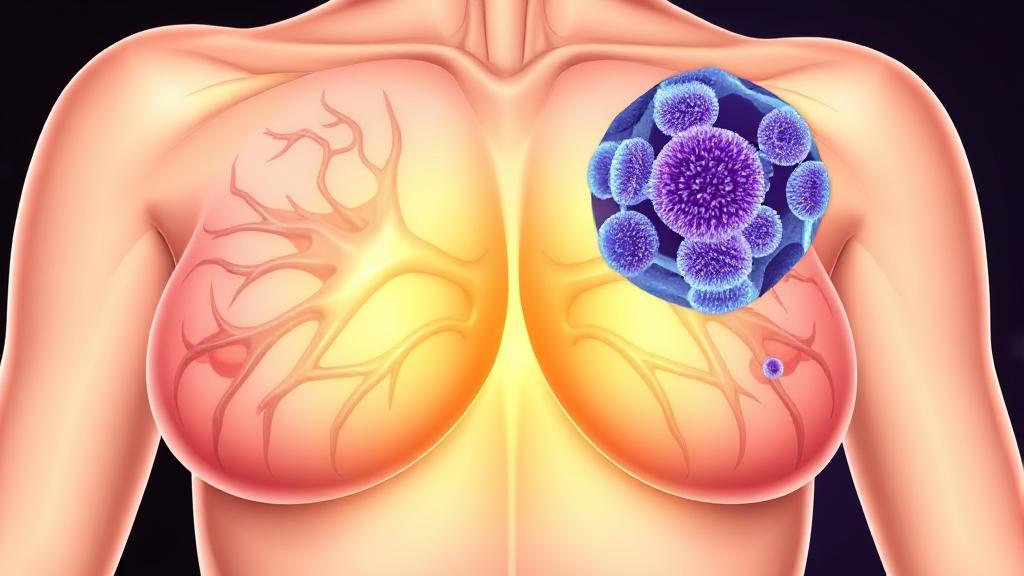Introduction
Breast cancer is a complex and multifaceted disease that affects millions of people worldwide. Among its various forms, Invasive Ductal Carcinoma (IDC) is the most prevalent, accounting for approximately 80% of all breast cancer diagnoses. Understanding IDC is crucial for early detection, effective treatment, and improving patient outcomes.
What is Invasive Ductal Carcinoma?
IDC, also known as infiltrating ductal carcinoma, begins in the milk ducts of the breast and invades surrounding breast tissue. Unlike non-invasive breast cancers, IDC has the ability to spread beyond the ducts into the surrounding breast tissue and potentially to other parts of the body through the lymphatic system and bloodstream.
Risk Factors
Several factors can increase the risk of developing IDC:
- Age (risk increases with age, especially after 50)
- Family history of breast cancer
- Inherited gene mutations (BRCA1 and BRCA2)
- Dense breast tissue
- Early onset of menstruation
- Late menopause
- Obesity
- Alcohol consumption
- Previous radiation exposure to the chest area
- Hormone replacement therapy
Signs and Symptoms
Common symptoms of IDC include:
- A new lump or mass in the breast
- Changes in breast size or shape
- Skin irritation or dimpling
- Breast or nipple pain
- Nipple retraction (turning inward)
- Redness, scaliness, or thickening of the nipple or breast skin
- Nipple discharge other than breast milk
- Swelling or redness of the skin
"Early detection remains the cornerstone of breast cancer treatment success. Regular screening mammograms are essential for women over 40." - National Cancer Institute
Diagnosis
Healthcare providers typically use a multi-step approach to diagnose IDC:
- Clinical Breast Examination (CBE)
- Mammogram
- Breast ultrasound
- MRI (in some cases)
- Biopsy for confirmation
For more detailed information on breast cancer diagnosis, you can visit the American Cancer Society.
Treatment Options
Treatment for IDC depends on several factors, including the stage of cancer, hormone receptor status, and the patient's overall health. Common treatment options include:
Primary Treatments
- Surgery (lumpectomy or mastectomy)
- Radiation therapy
- Chemotherapy
Additional Therapies
- Hormone therapy
- Targeted therapy
- Immunotherapy
Staging and Prognosis
The TNM staging system helps determine the extent of IDC:
| Stage | Description | 5-Year Survival Rate |
|---|---|---|
| I | Early-stage | 95-100% |
| II | Early-stage | 85-95% |
| III | Advanced | 60-85% |
| IV | Metastatic | 25-40% |
Living with IDC
Support Resources
- National Cancer Information Center
- Local support groups
- Online communities
- Professional counseling
Lifestyle Recommendations
Post-diagnosis lifestyle modifications can support treatment and recovery:
- Maintain a healthy diet
- Exercise regularly (as approved by healthcare team)
- Get adequate rest
- Manage stress through relaxation techniques
- Build a strong support network
Prevention and Screening
While not all cases of IDC can be prevented, certain measures can help reduce risk:
- Regular mammograms
- Monthly breast self-exams
- Healthy lifestyle choices
- Limited alcohol consumption
- Maintaining healthy weight
- Regular physical activity
For a comprehensive guide on breast cancer treatment, refer to the National Cancer Institute.
Research and Future Directions
Ongoing research continues to advance our understanding and treatment of IDC. Current areas of focus include:
- Targeted therapies
- Immunotherapy advances
- Genetic testing improvements
- Personalized medicine approaches
Early detection and proper treatment significantly improve outcomes for IDC patients. Understanding risk factors, recognizing symptoms, and maintaining regular screening schedules are crucial steps in managing this common form of breast cancer. With continuous advances in treatment options and growing support resources, patients with IDC have more hope than ever for positive outcomes.
